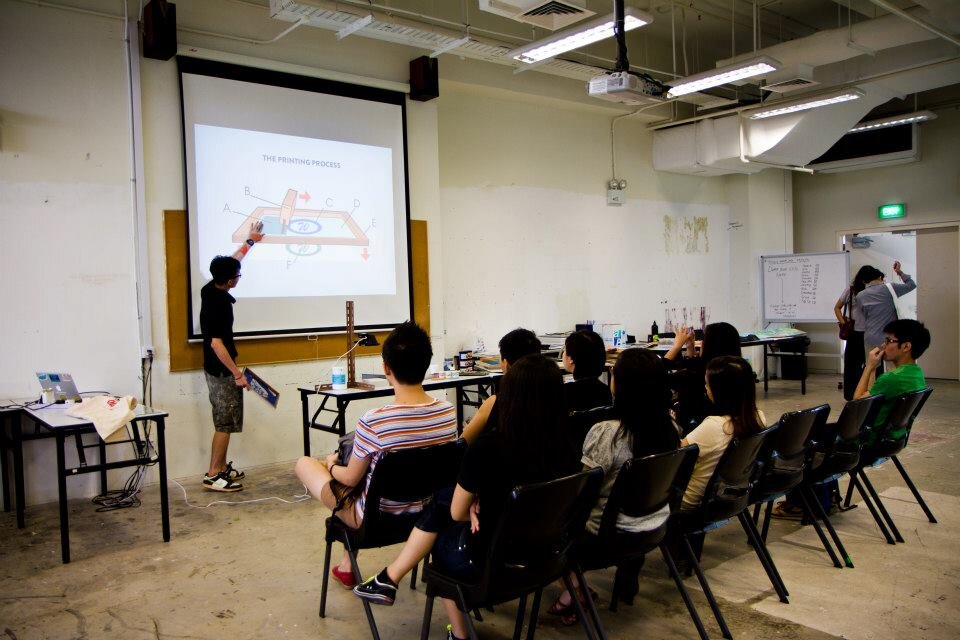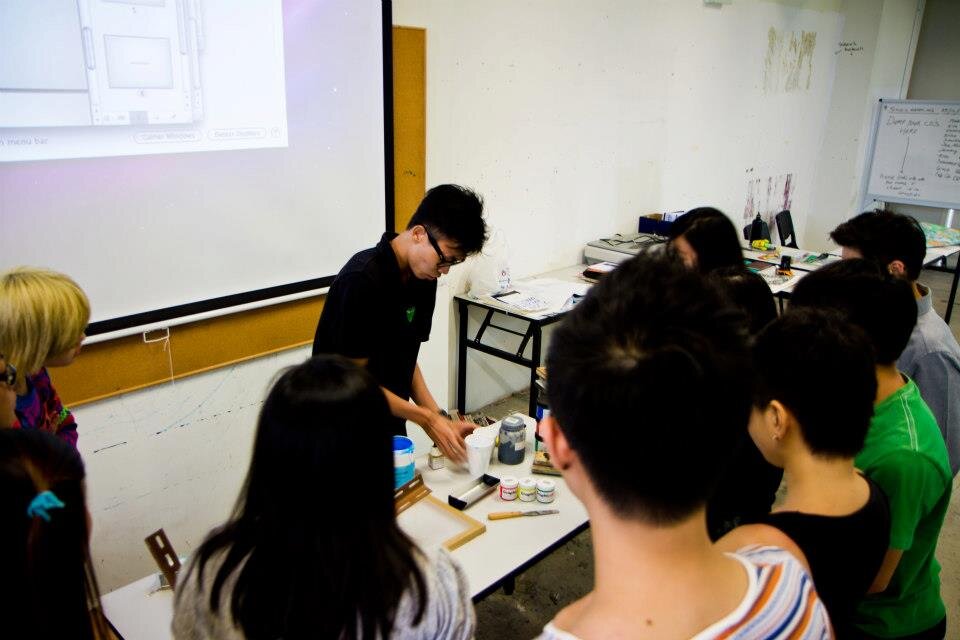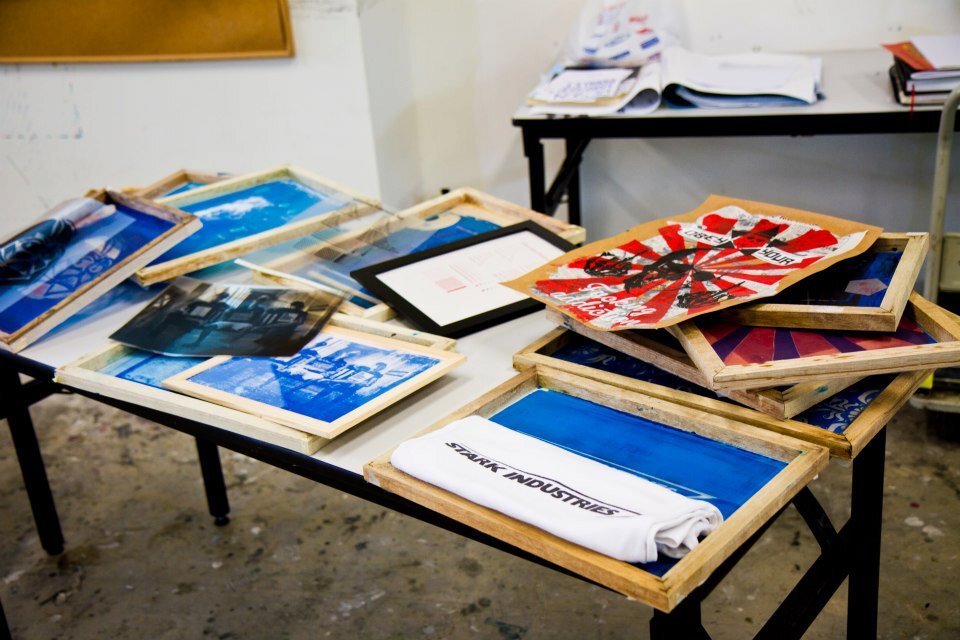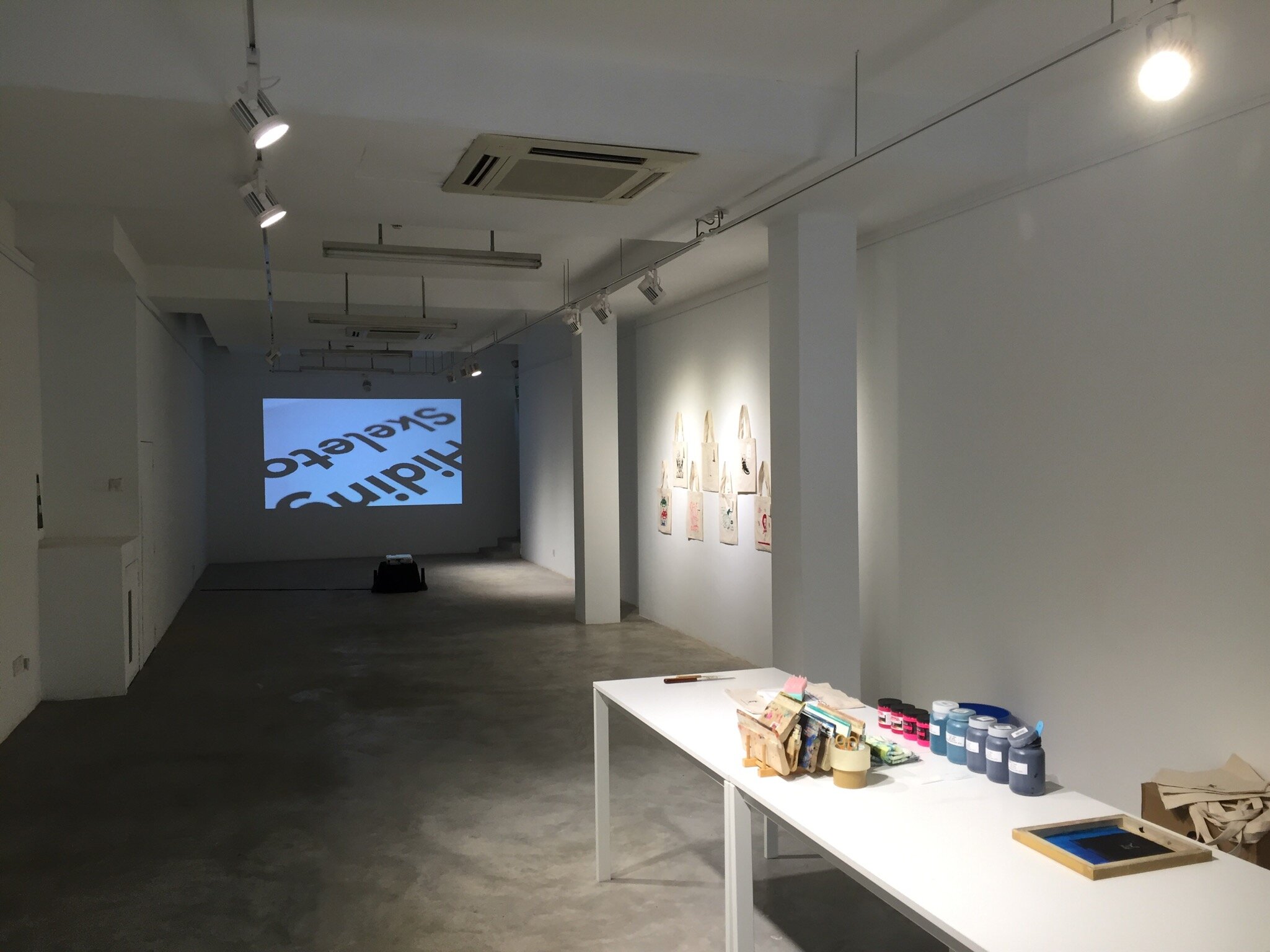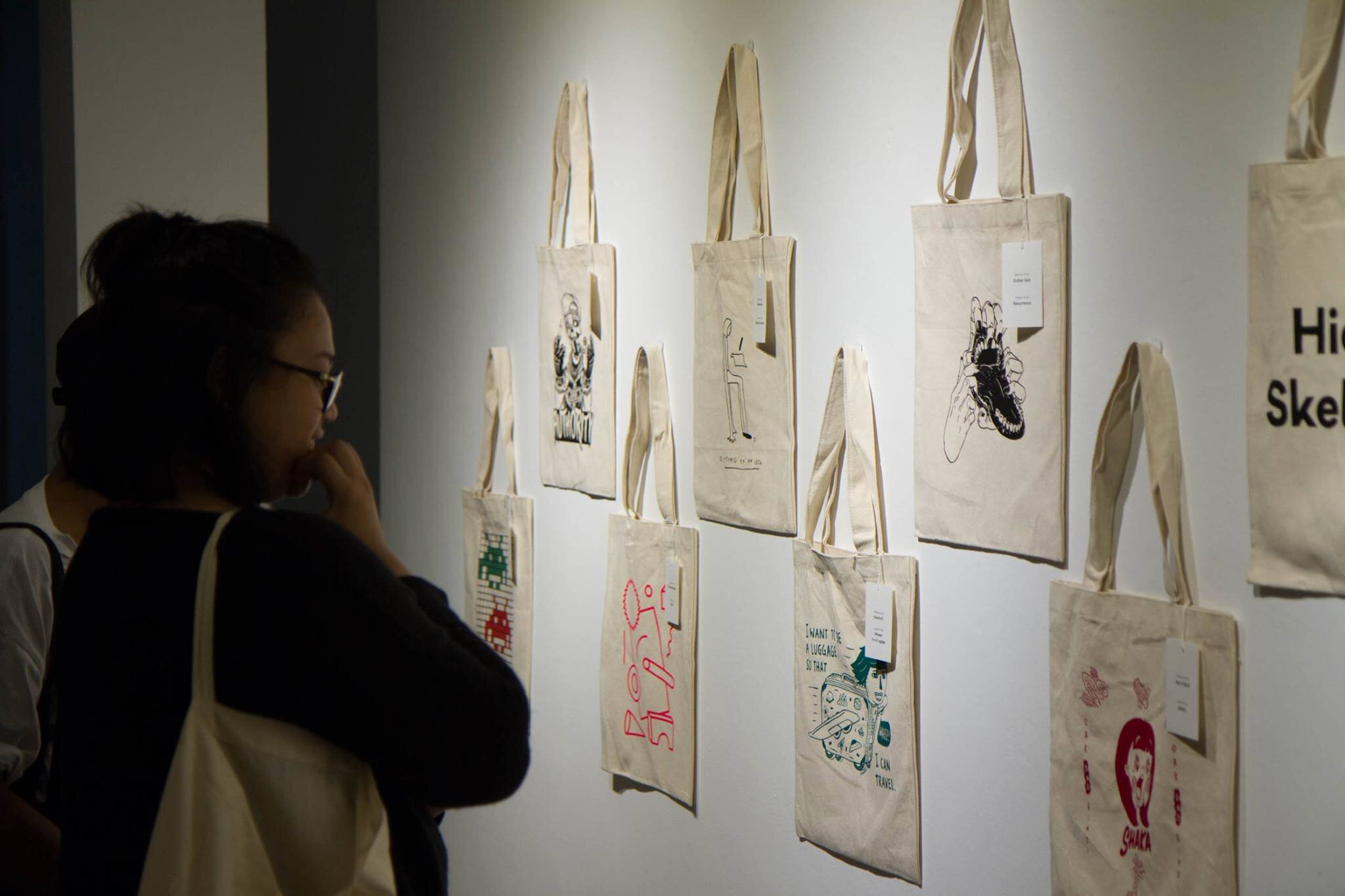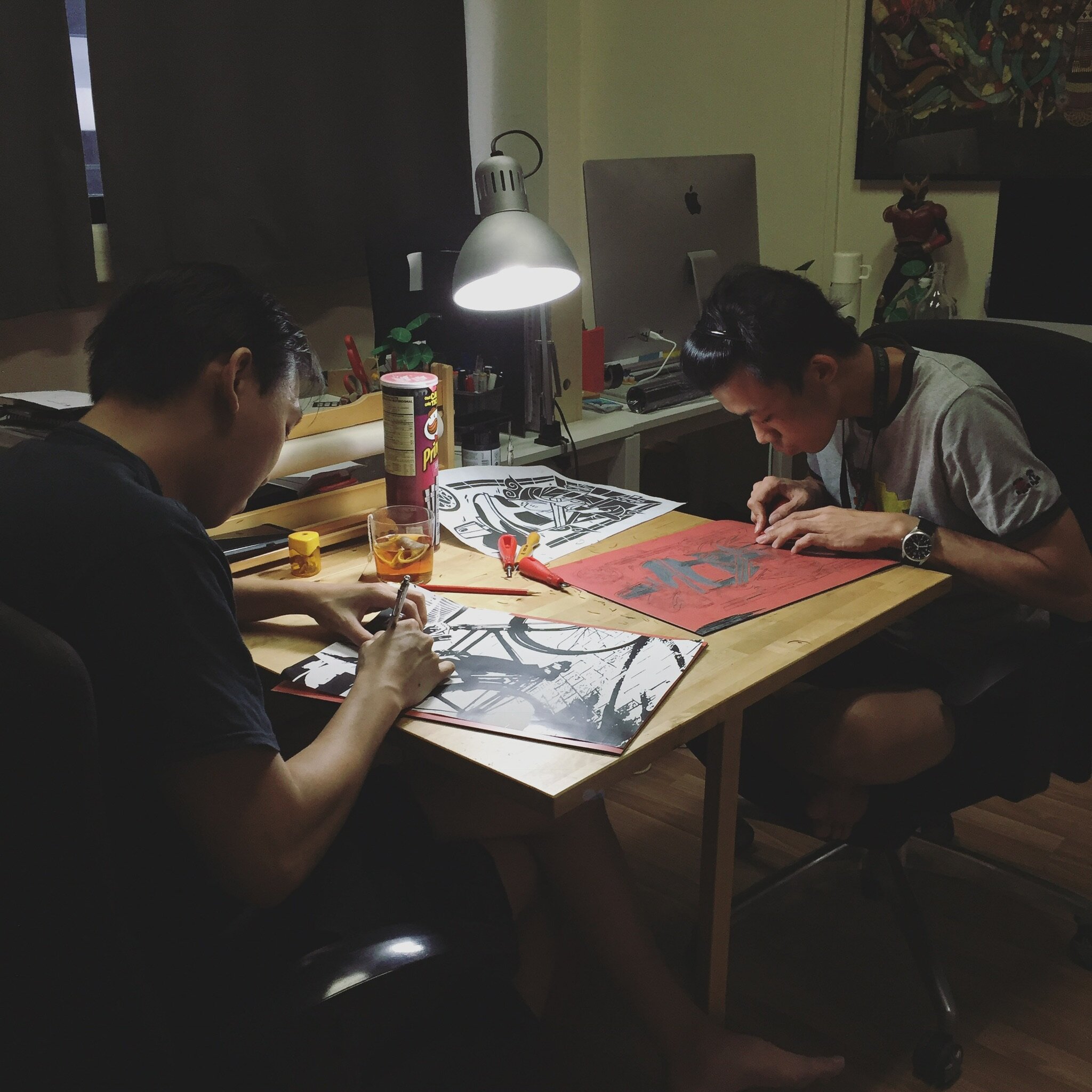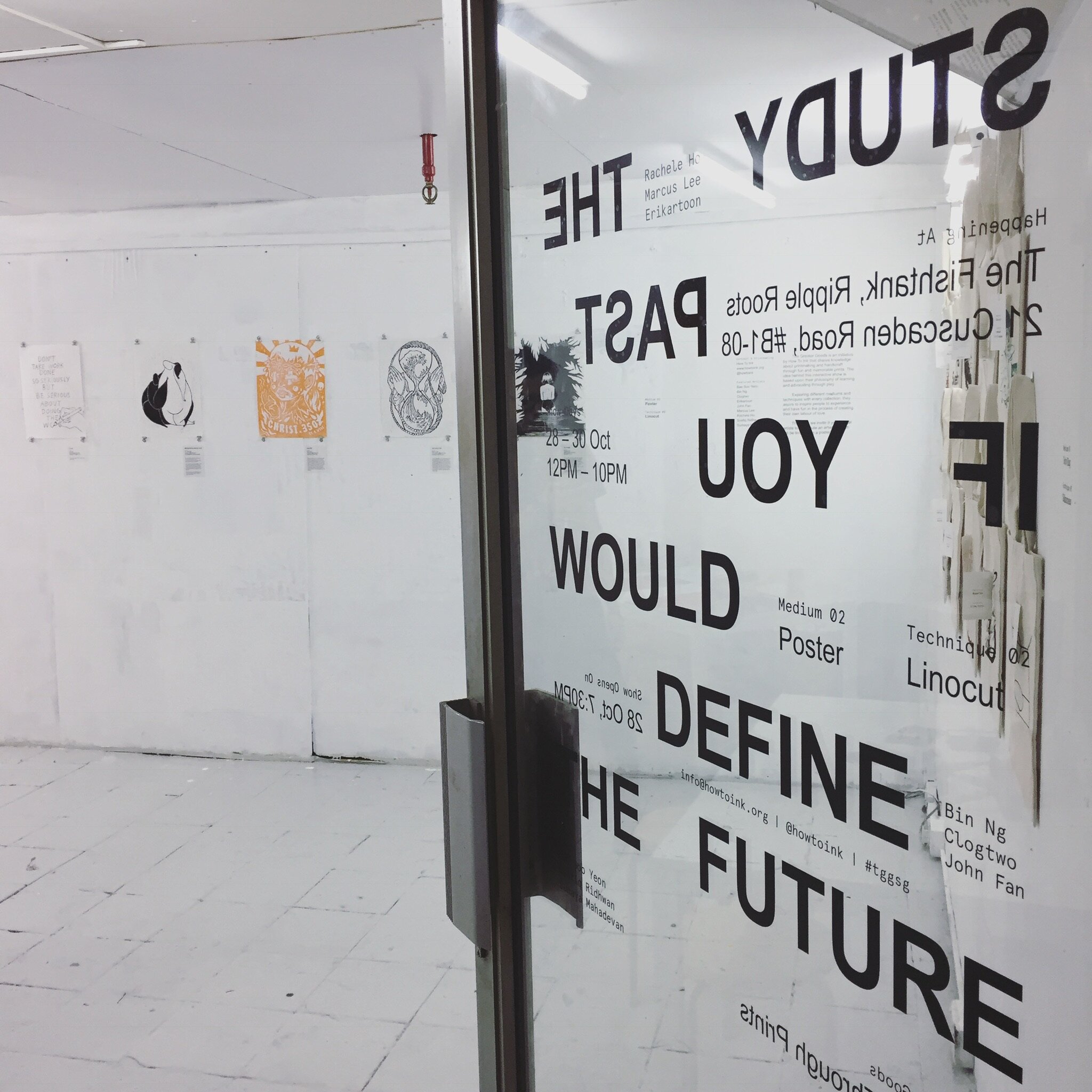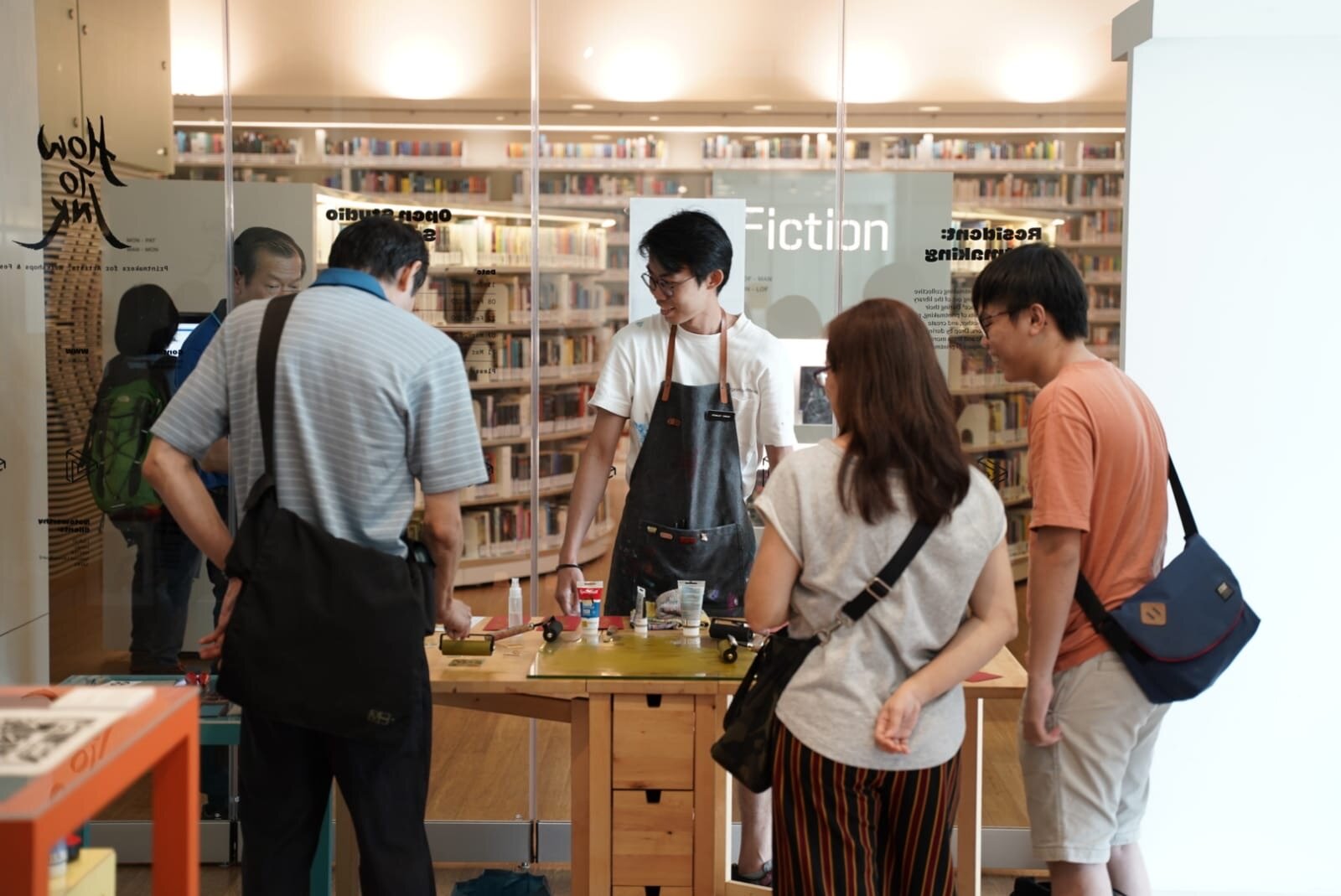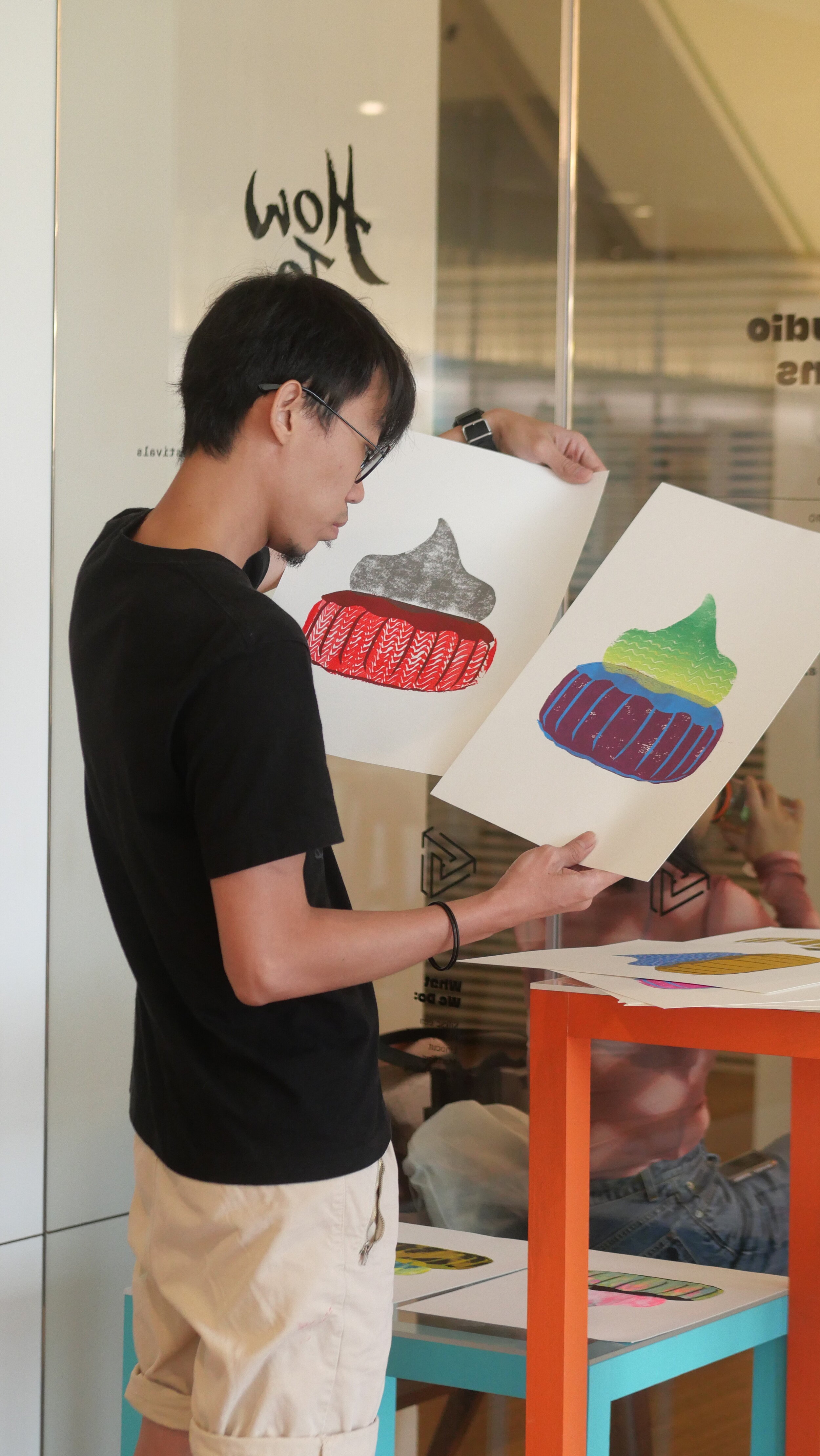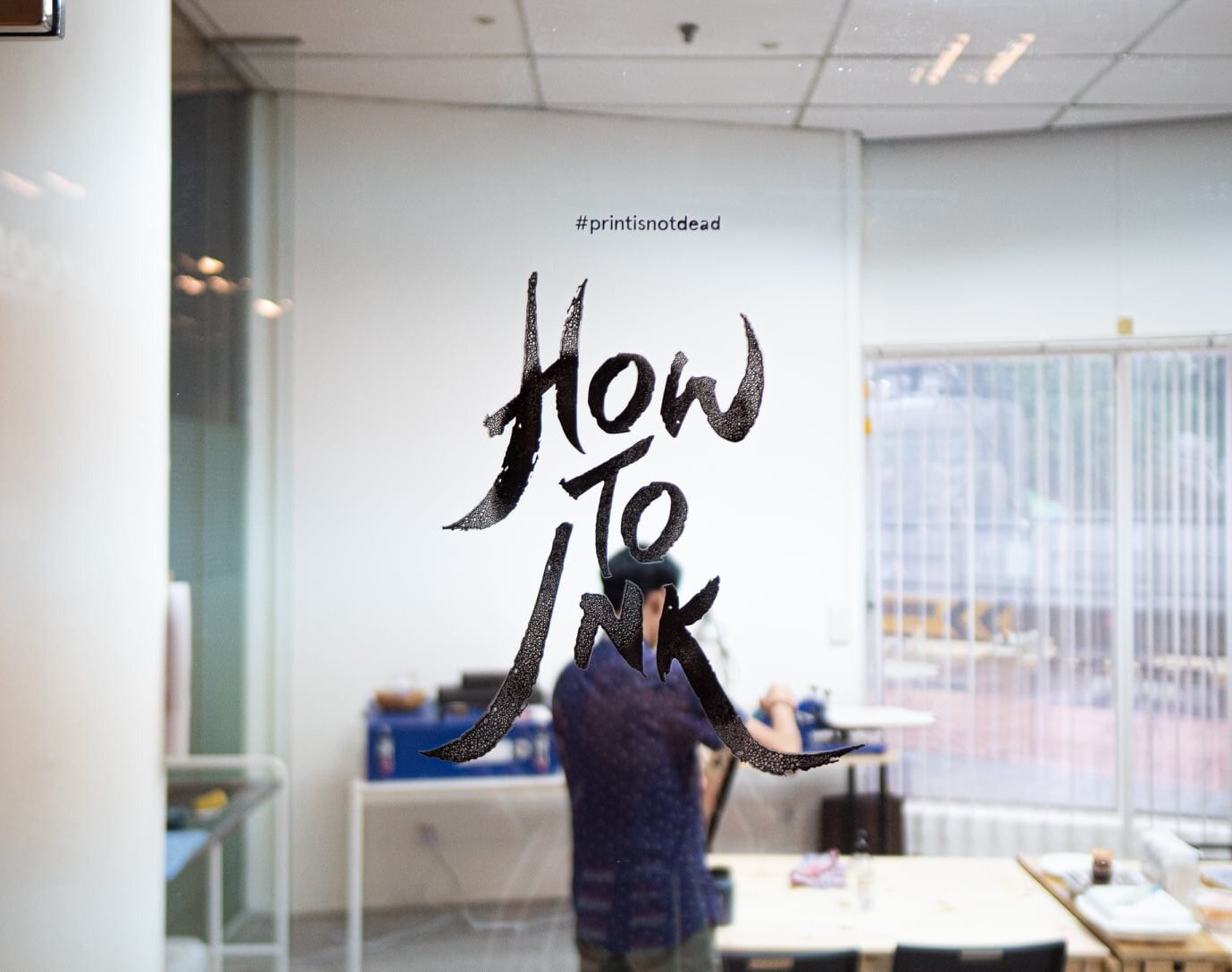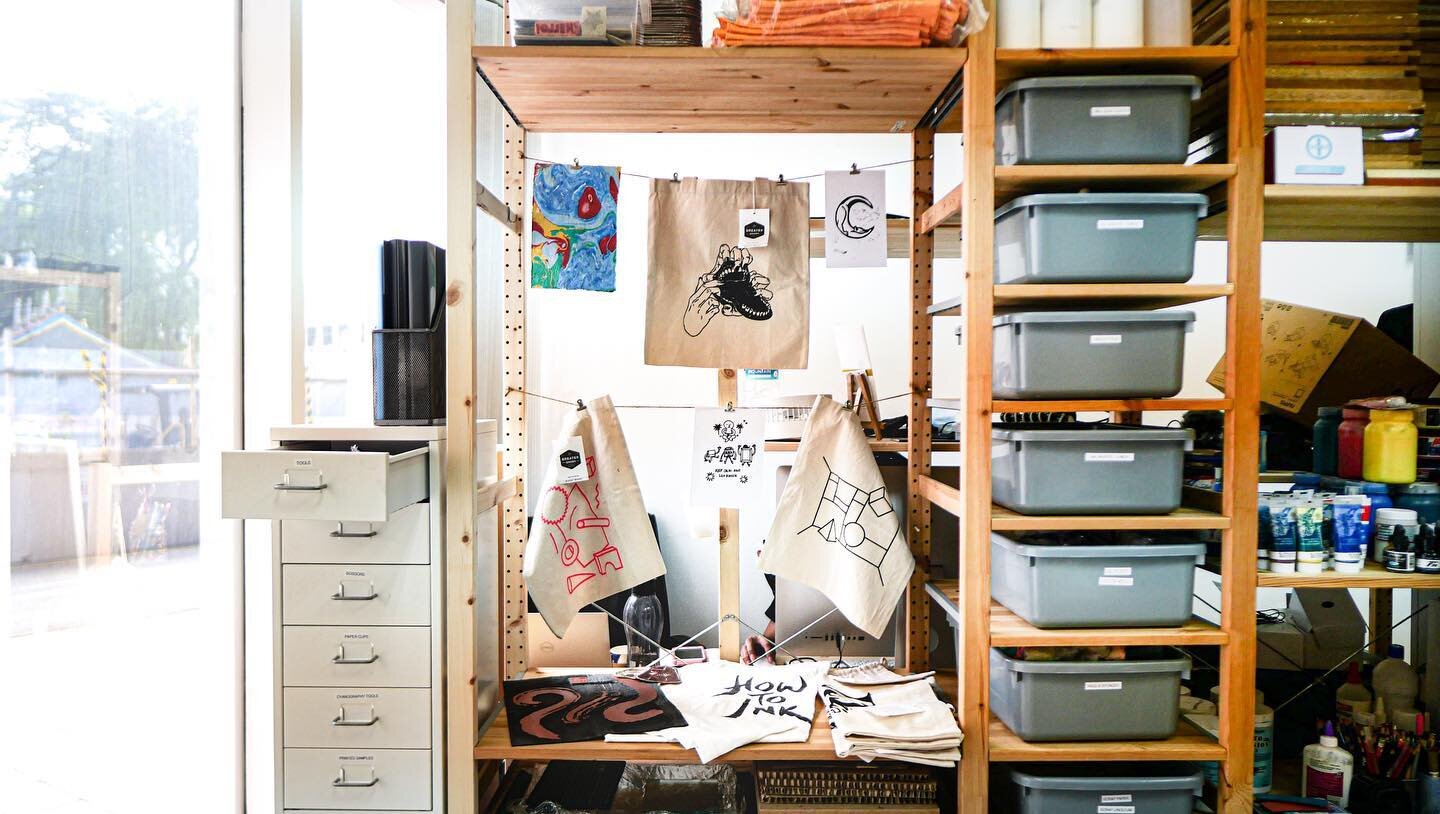The Story of How To Ink
To most, printing comes at the click of a button. An automated process of Ctrl + P that transforms anything digital into a physical piece (or pieces) you can hold.
To me, printing is a little more than that.
It’s about dedication, hard-earned skill and bringing a hand-touch quality to create each uniquely (and hopefully, beautiful) print. Whether it’s through silk screen printing, lino-cutting, mono-printing and many more, the different methods and techniques are distinctive and, of course, creates something really special.
“Prints mimic what we are as humans: we are all the same and yet every one is different.”
- Kiki Smith, printmaker
At the beginning
How To Ink’s story began in 2015.
Exposed to printmaking - and even hosting a couple of workshops - as part of my school curriculum, two mates and I mulled over what a great idea it would be to start a studio. We shared the same frevour; we wanted to tell the world of the wonders of printmaking and how it's essential in this digital day and age.
The decision was simple.
We got started on the nitty gritty immediately, including the all important name. The first thought that came to our minds was the Mandarin phrase for embossing, “凹凸印” (Āo Tú Yìn). Repeat it enough times, and you’ll hear why we’re called How To Ink.
It was more than just a cool sounding name, though.
Printmaking, or 凹凸印 in particular, is based off yin-and-yang principle of utilising positive and negative moulds to produce certain impressions on paper. Which goes back to the reason we fell in love with printmaking - that only by embracing the good and bad, can we create what’s truly ours.
Our “nomadic” years
The first year proved relatively successful, giving us just enough to rent out a studio space. The cosy little spot was at Kapo Factory near Tai Seng MRT.
And I wasn’t kidding about “cosy”. It was the size of a small bedroom, but I managed to store much of my equipment and even a mini fridge (an essential, obviously).
It was honestly the heyday of How To Ink at that point. We had a place to call our own and we were creating prints day in, day out. We had friends, who were either illustrators, designers and so on, contributing their works to be physically printed. Silkscreens being exposed, A3-sized linocuts being carved and all sorts of inks staining the table, aprons and some of my favourite shirts (no regrets).
This sparked our first exhibition “The Greater Goods" (which we held twice, in 2015 and 2016). We gathered local illustrators and designers to contribute their artworks to be printed via our many printmaking techniques. (You know, rather than digital printing.)
We wanted to show how printmaking still has a place here and now. The exhibition was a place where creatives could explore by seeing, touching and hearing for themselves what the various mediums and techniques can do for their works. It was also a rare chance for the public to see printmaking in the context of our modern world, and to drive that further, we also did live silkscreen printing for a quick glimpse of what joy can come from making your own prints.
Alas, being a craftsman was not the most financially sustainable. I was toiling away at a full time job to support the studio. Two years on, running between two places took a toll on me. Ultimately, I had to make the down-hearted decision and say goodbye to the studio space.
It wasn’t the end of How To Ink (which is why we are here)!
After moving everything back to my bedroom (a basic HDB bedroom, by the way), I continued on with live events and conducting workshops off-site. I would very much still love to have a studio, but it was during this period that I got to work with some pretty amazing people as well.
This included a three-month residency at the hip library@orchard, where we showcased all our favourite techniques to those who had the time. The programme also sparked the Iced Gem Biscuit series, where the How To Ink team (founders, volunteers and friends) would come in to make their own version of the nostalgic snack in either silkscreen, linocut or marbling printing.
A place to call home
The residency really made me yearn for a proper studio space again. You know, a space that everyone could just come in and create their own prints, regardless of their experience level. Just a space that’ll be the canvas to whatever you’d want to create that day.
And for me, ultimately, I wanted a space to refine my craft, and explore even more printmaking techniques.
At this point, How To Ink was 5 years old. The entire team was no longer fresh out of school. Of the three of us, my two schoolmates and co-founders have decided to focus on their current careers and families, giving me and the new team the blessing to take How To Ink into a new age.
TLDR; Chance has us finding a space at Concorde Shopping Centre. Right smack between Tiong Bahru, Chinatown, Orchard etc, with a Havelock MRT coming up soon, the location was pretty great (and we hope you all think so too). Space-wise it was much bigger than Kapo, and could host up to a healthy 8 of you with ample space to spare during the workshops. I even managed to save an office space at the back for my (new obsession) coffee machine and all the daily essentials (snacks, snacks and more snacks).
On most days, the studio will see me and my partner, Jessica. Occasionally, you’ll see our two feline friends (or overlords), Pow Pow and Mi Mi. We’ll also be joined by my trusty assistant who’s been there from the start, Bin.
New Studio, Same Philosophy
How To Ink hasn’t changed fundamentally. We’re still about advocating the printmaking methods I adore so much.
I won’t say that it's a dying trade, but, in Singapore, it is definitely a forgotten one.
Machinery has evidently taken over. Printmaking, if compared, is ultimately a process that takes time, effort and skill and produces small batches.
But what machinery has not been able to re-create is the yin and yang, the good and the happy accidents that come with printmaking. No single print is exactly the same, and they’re all telling a story of you as an artist / craftsman at that moment.
We’re not looking to replace or pit printmaking with fine-tuned machinery, but allowing it to find its place as its own in this modern age. And to allow people to understand the origin of printing, and see how far we’ve evolved this seemingly mindless everyday process over thousands of years.
How To Ink is made of a bunch of simple, printmaking loving friends who would love to show you all that makes us love it so much.
Whether you’re looking to start a new hobby craft, am a budding creative looking to explore different mediums, wanting to create a special gift or just simply looking for a weekend activity, check us out.

